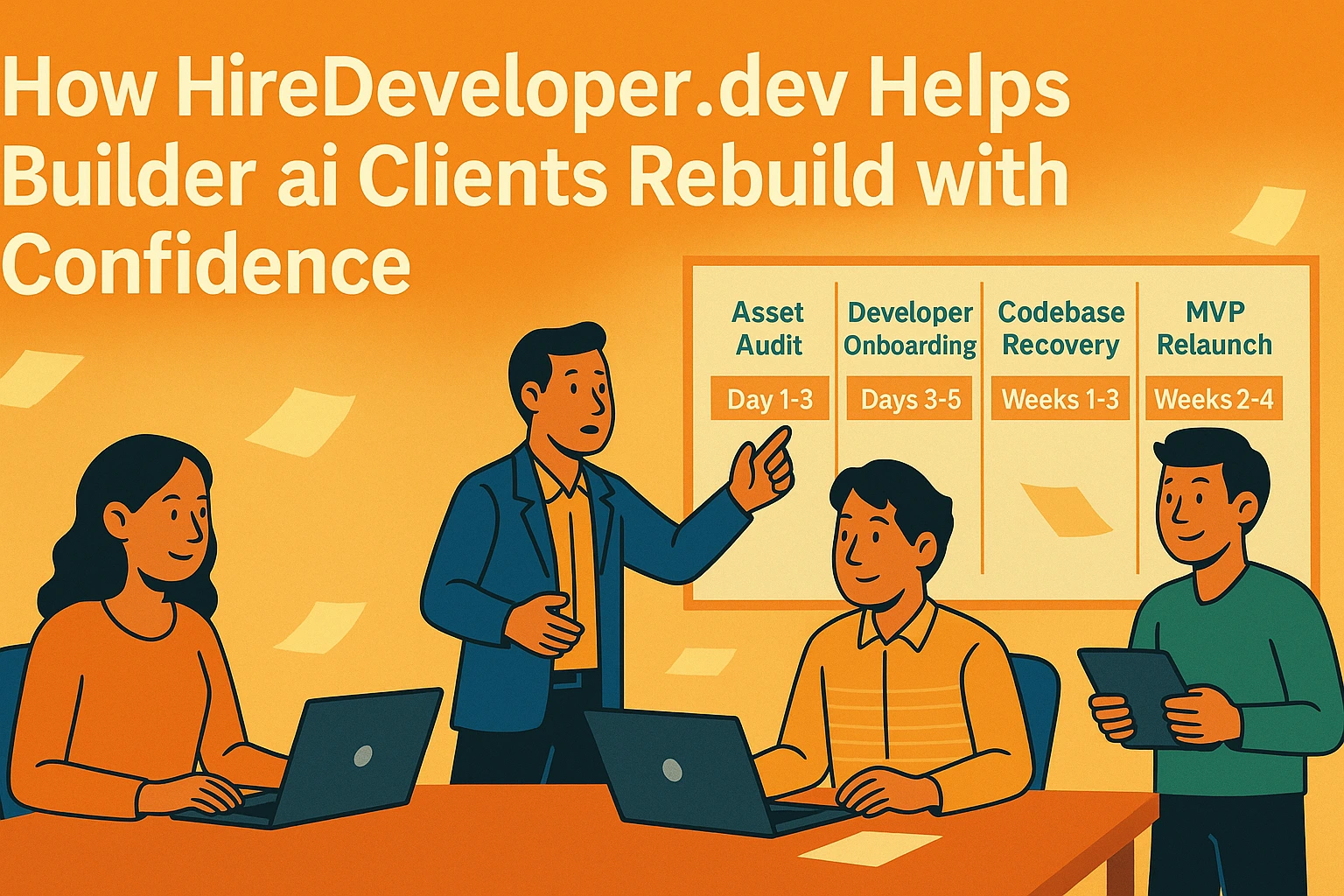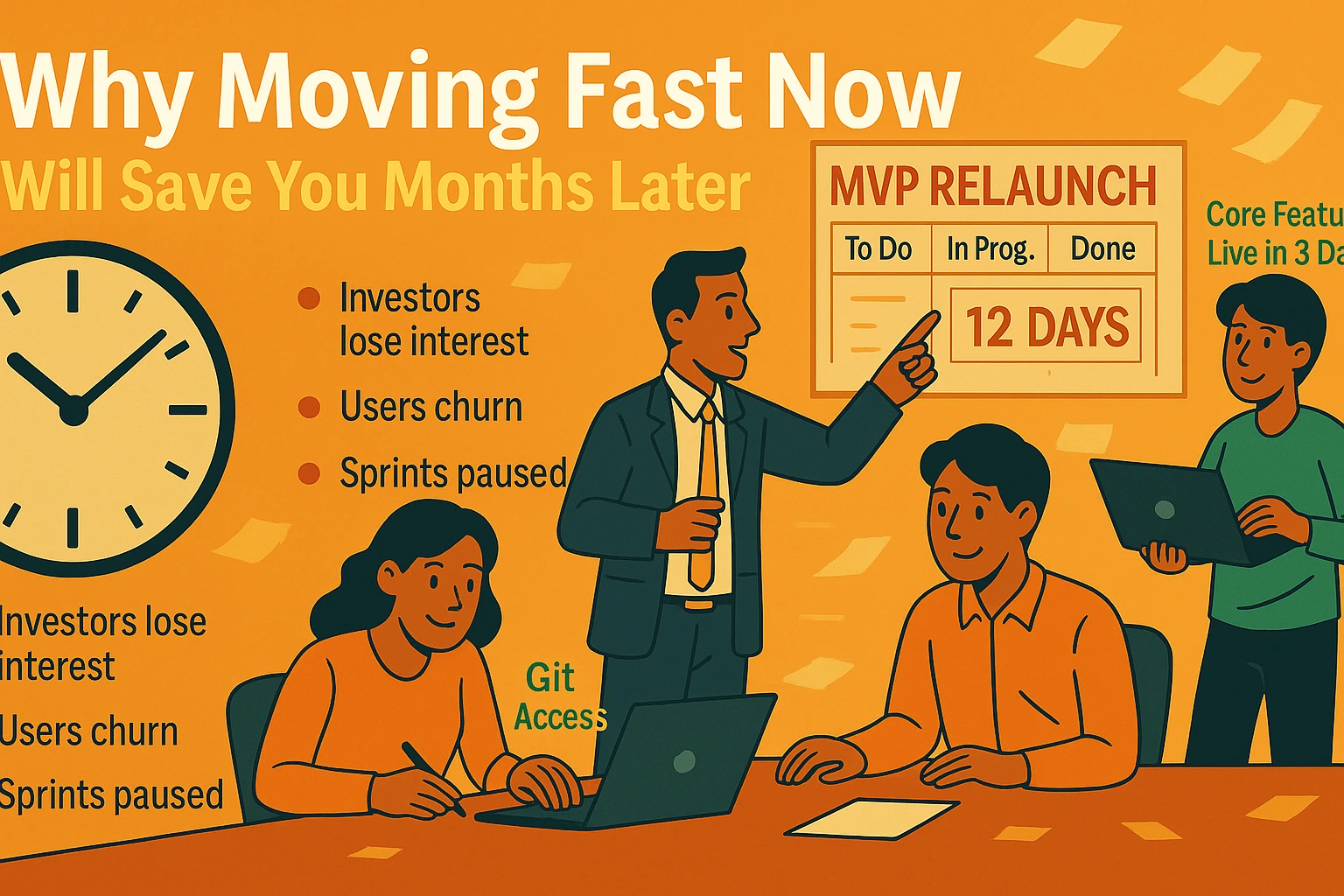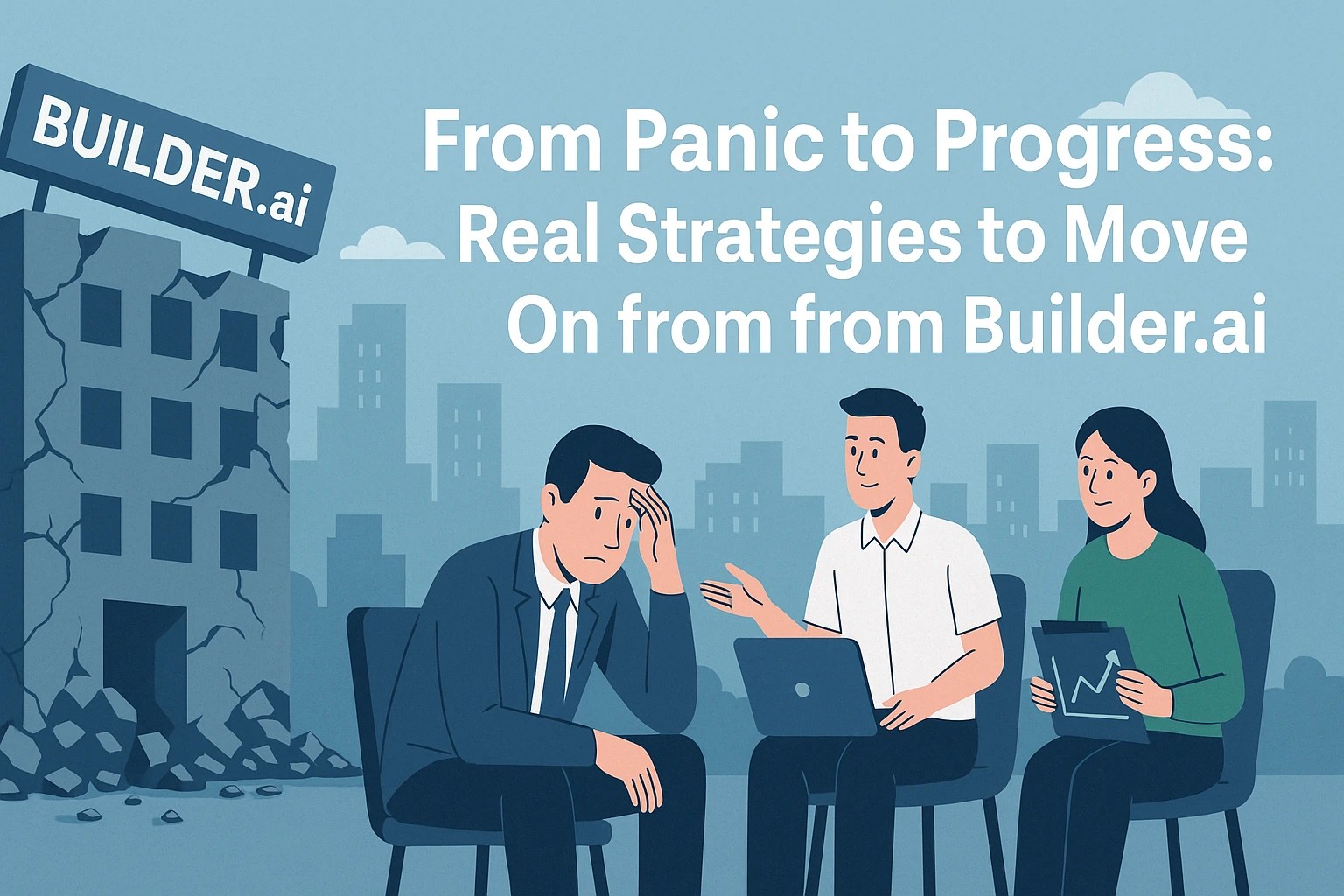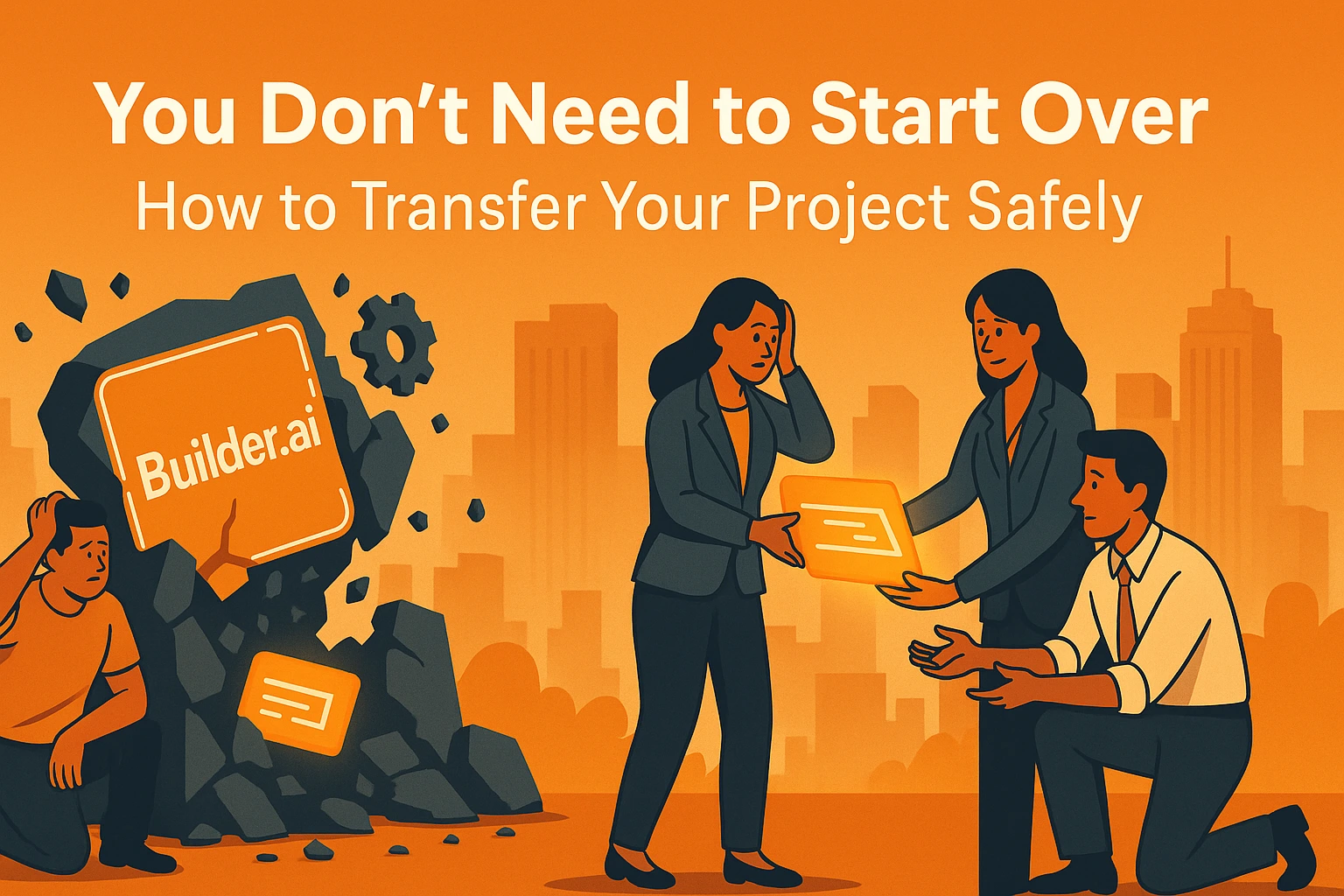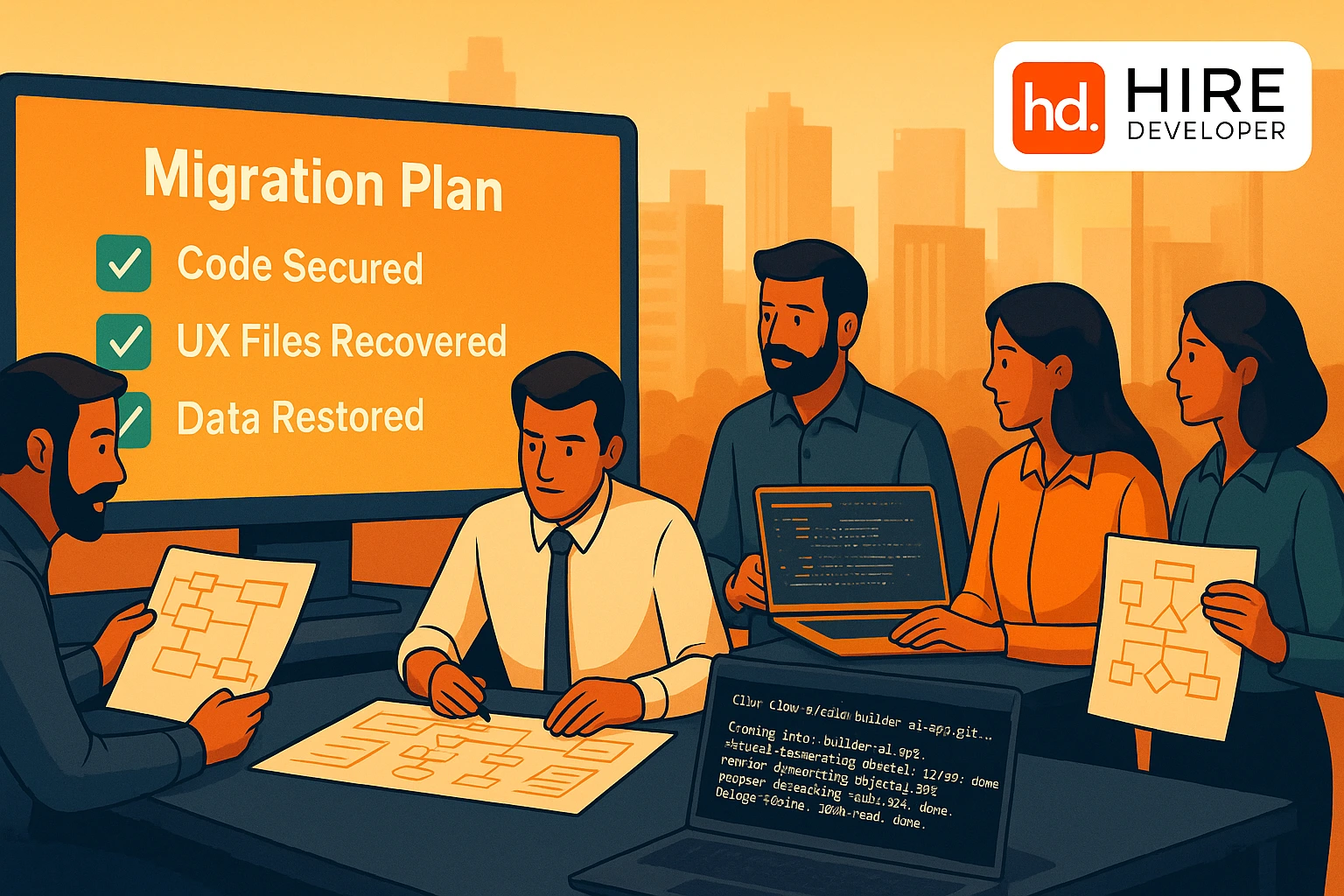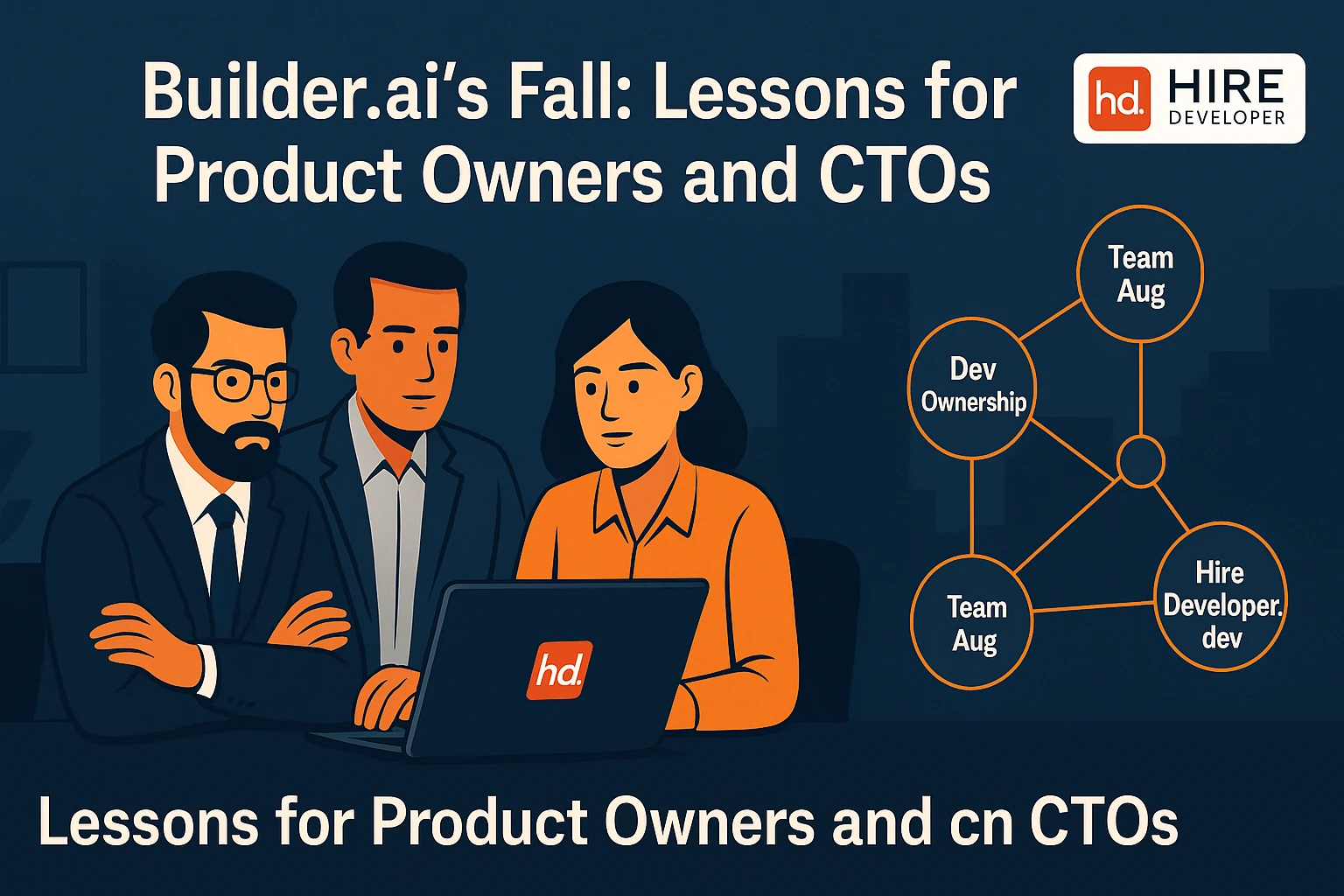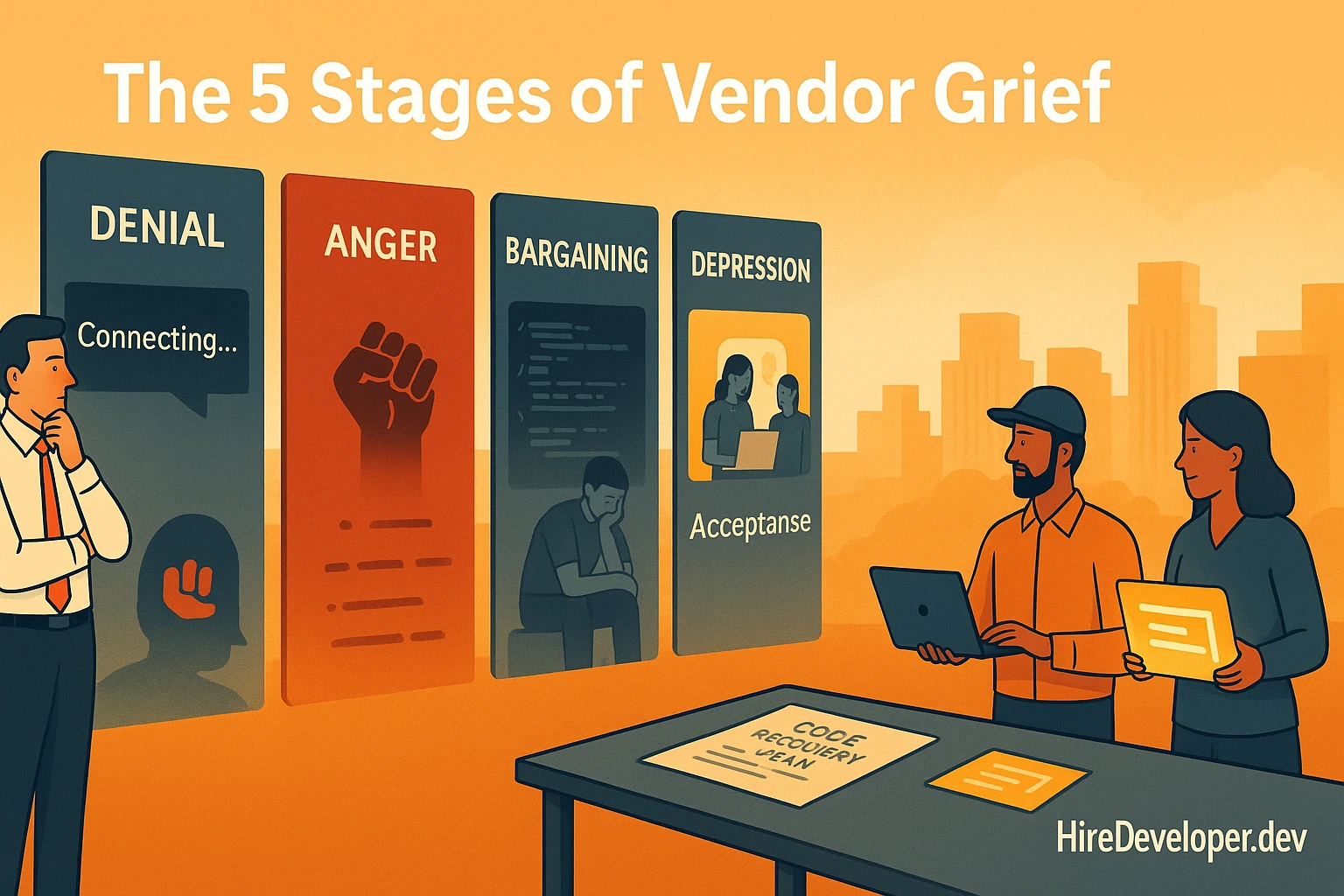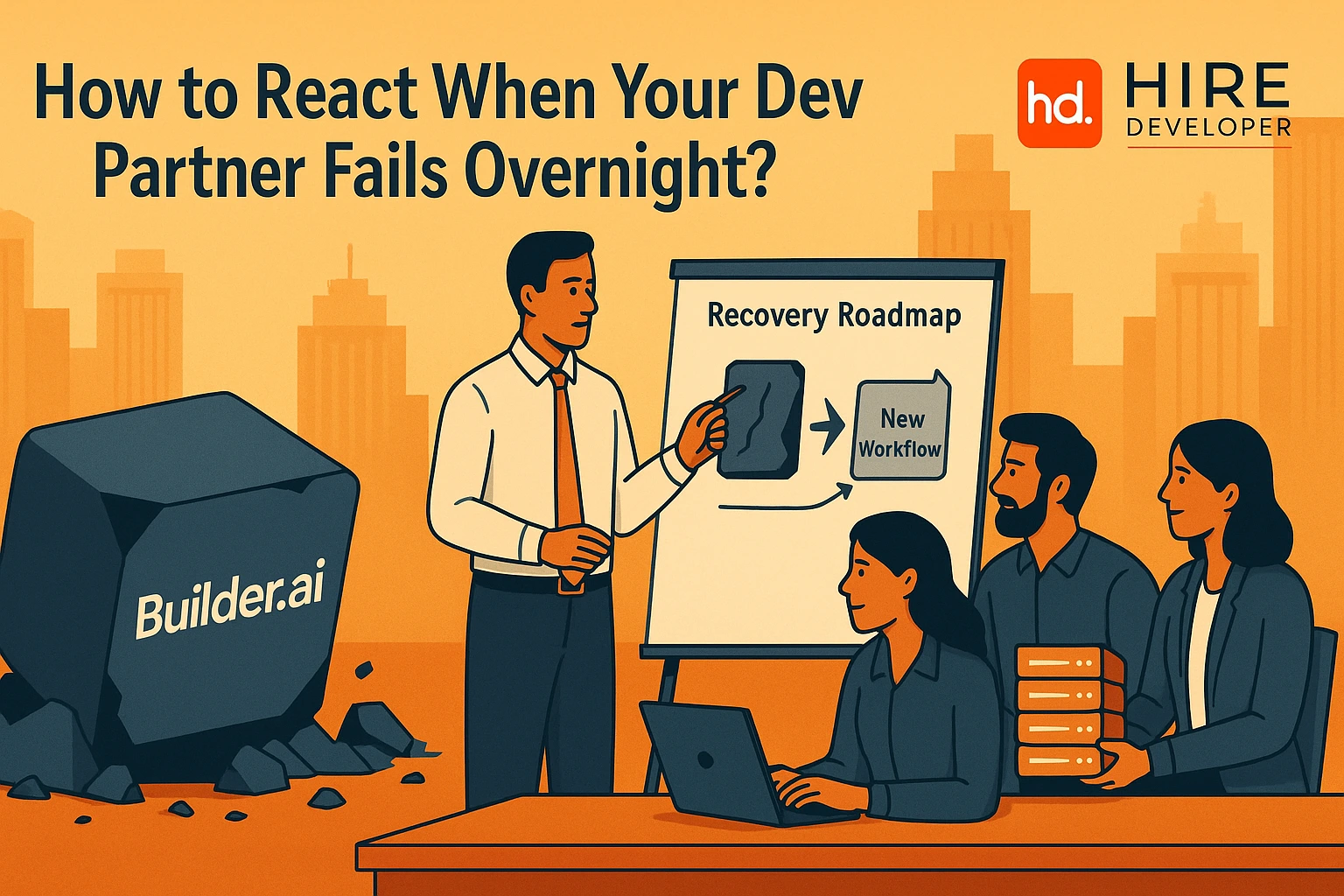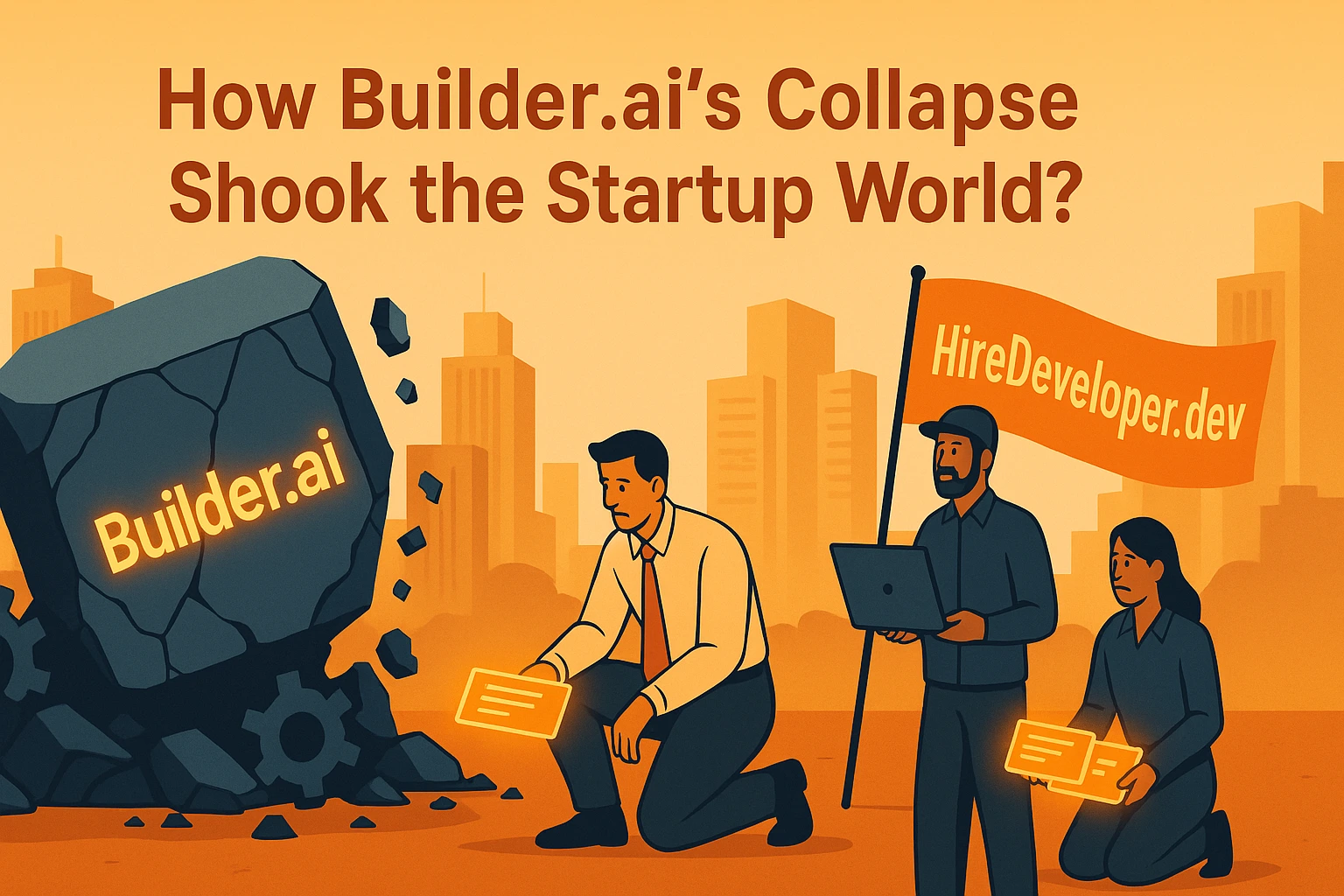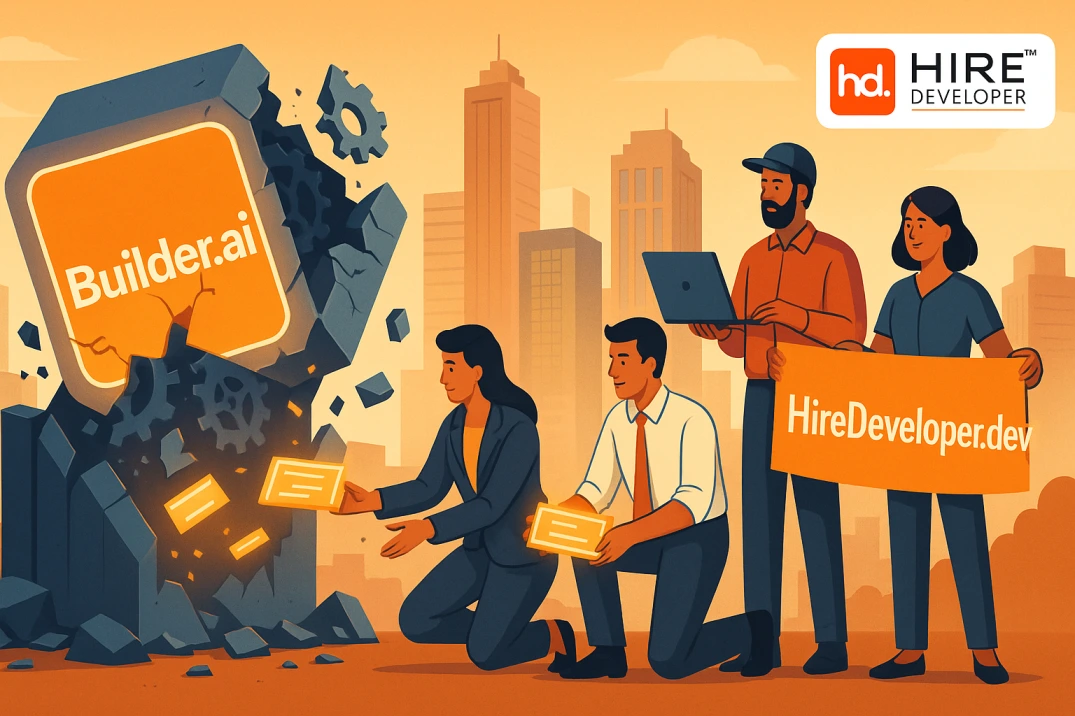“We didn’t just lose a dev partner. We lost time, access, and confidence.”
If you’re coming off a failed platform like Builder.ai, you’re not alone, and you’re not powerless.
At HireDeveloper.Dev, we’ve helped product teams, CTOs, and startup founders migrate from black-box vendors to fully transparent, developer-embedded models.
This blog breaks down exactly how we do it, so you can stop panicking, start rebuilding, and get back to growth.
The Problem: What Builder.ai Took Away
When Builder.ai went under, clients didn’t just lose service, they lost:
- Access to their codebase.
- Visibility into who was building what.
- Trust in timelines and budgets.
- Momentum in go-to-market plans.
The real pain wasn’t technical. It was leadership-level damage.
Our Approach: Not a Platform, But a Partner
We don’t replace one black box with another. We assign vetted developers who:
- Plug into your team.
- Work in your stack.
- Ship in your style.
- And hand everything back to you, including the Git repo.
We use staff augmentation as a core philosophy, not a workaround.
What Recovery Looks Like with HireDeveloper.Dev
Here’s our 5-step process that moves clients from collapse to clarity:
1. Technical Audit & Migration Assessment (Day 1–3)
We review:
- Existing access (staging, builds, repos).
- UX/UI files, user journeys.
- Feasibility of code salvage or reverse engineering.
You get a clear report on:
- What’s usable?
- What needs refactoring?
- Estimated recovery time.
2. Dev Team Allocation (Day 3–5)
Based on your project’s:
- Stack.
- Urgency.
- Team culture.
We assign 1–5 developers who begin work immediately under your direct control.
3. Codebase Rebuild or Transfer (Week 1–3)
We reconstruct critical components first:
- Auth systems.
- Dashboards.
- Data flows.
- Integrations.
No long onboarding. No sales handoffs. Just execution.
4. MVP Relaunch & QA (Week 2–4)
Once core features are restored, we:
- Reinstate live environments.
- Set up QA and regression testing.
- Begin product iteration and feature planning.
5. Ongoing Scaling & Ownership
You keep:
- The developers (monthly or long-term).
- The infrastructure.
- The codebase.
- The control.
You’re free to add, pause, or pivot anytime.
Why This Works (When Platforms Fail)
Unlike Builder.ai or other vendors:
- We don’t hide development behind dashboards.
- We don’t lock you into proprietary systems.
- We don’t fragment the delivery process.
We simply assign excellent developers to your team. You own the process from start to finish.
Real Results: How Our Clients Recover
Here’s a typical Builder.ai switch story:
- A productivity SaaS company lost access to its backend after Builder.ai shut down.
- Within 72 hours of contacting us, they had 2 senior Node + React devs working on their GitHub.
- Within 18 days, their customer dashboards were live again.
- They presented a stable roadmap in their next investor sync and secured bridge funding based on their recovery.
From black-box to control panel. From chaos to clarity.
“From Collapse to Clarity: Your First 30 Days with HireDeveloper.Dev”
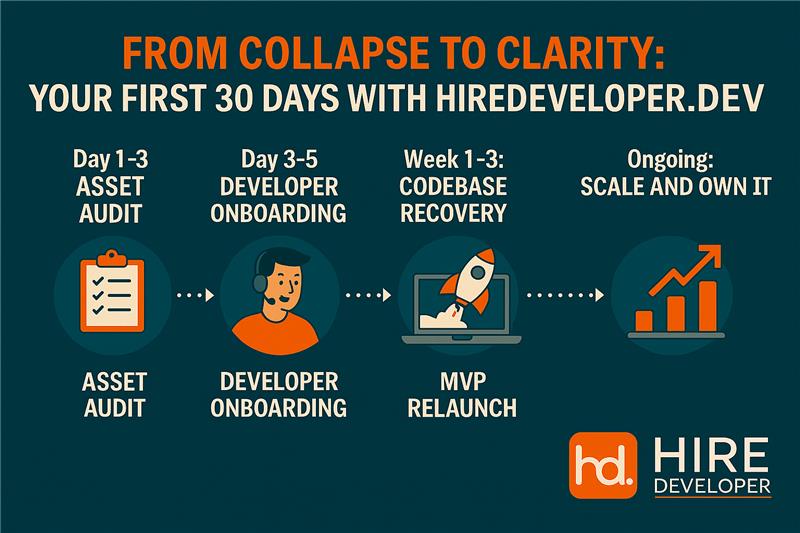
Ready to Recover, Rebuild, and Move Fast With Your Team, Your Code, and Full Control?
Struggling to regain control after Builder.ai’s collapse? You’re not alone. HireDeveloper.Dev is enabling teams to break free from restrictive platforms with a smarter, future-ready development approach.
Every week, businesses are moving forward again, migrating projects, restoring momentum, and accelerating delivery, thanks to our network of pre-vetted developers and flexible, code-first solutions. No black-box platforms. No vendor lock-ins. Just clean code, clear control, and fast results.
It’s time to build without limits.
Book your free consultation call today with HireDeveloper.Dev, your trusted development partner. Call us now at +91-8103094848 and let’s bring your product vision to life.
Related Resources:
- What Happened to Builder.ai? A Breakdown for Startup Founders
- How Builder.AI’s Collapse Shook the Startup World?
- How to React When Your Development Partner Fails Overnight?
- The 5 Stages of Vendor Grief and How to Get Unstuck
- Builder.ai’s Fall: Lessons for Product Owners and CTOs
- Builder.ai Migration Checklist: Save Your Code, Your Time, Your Product
- You Don’t Need to Start Over How to Transfer Your Project Safely
- From Panic to Progress, Real Strategies to Move on from Builder.ai
- Why Moving Fast Now After Builder.ai’s Collapse Will Save You Months Later
- Builder.ai vs. Human-Led Dev Teams: What We’ve Learned
- No More Black Boxes: The Power of Developer Transparency
- AI Was the Hype: Human Execution Is the Reality
- In Crisis, Founders Need More Than Just Tech: They Need Trust
- Why Owning Your Codebase Is Non-Negotiable in 2025
- Avoiding the Next Builder.ai: Red Flags Every Buyer Should Watch For
- From Locked to Liberated: How We Helped Former Builder.ai Clients Reclaim Control
- The Myth of One-Click Apps: Why Custom Always Wins in the Long Run
- What Every Investor Wants to Know: Technical Due Diligence After Builder.ai
- From Recovery to Resilience: A Blueprint for Building Post-Builder.ai
